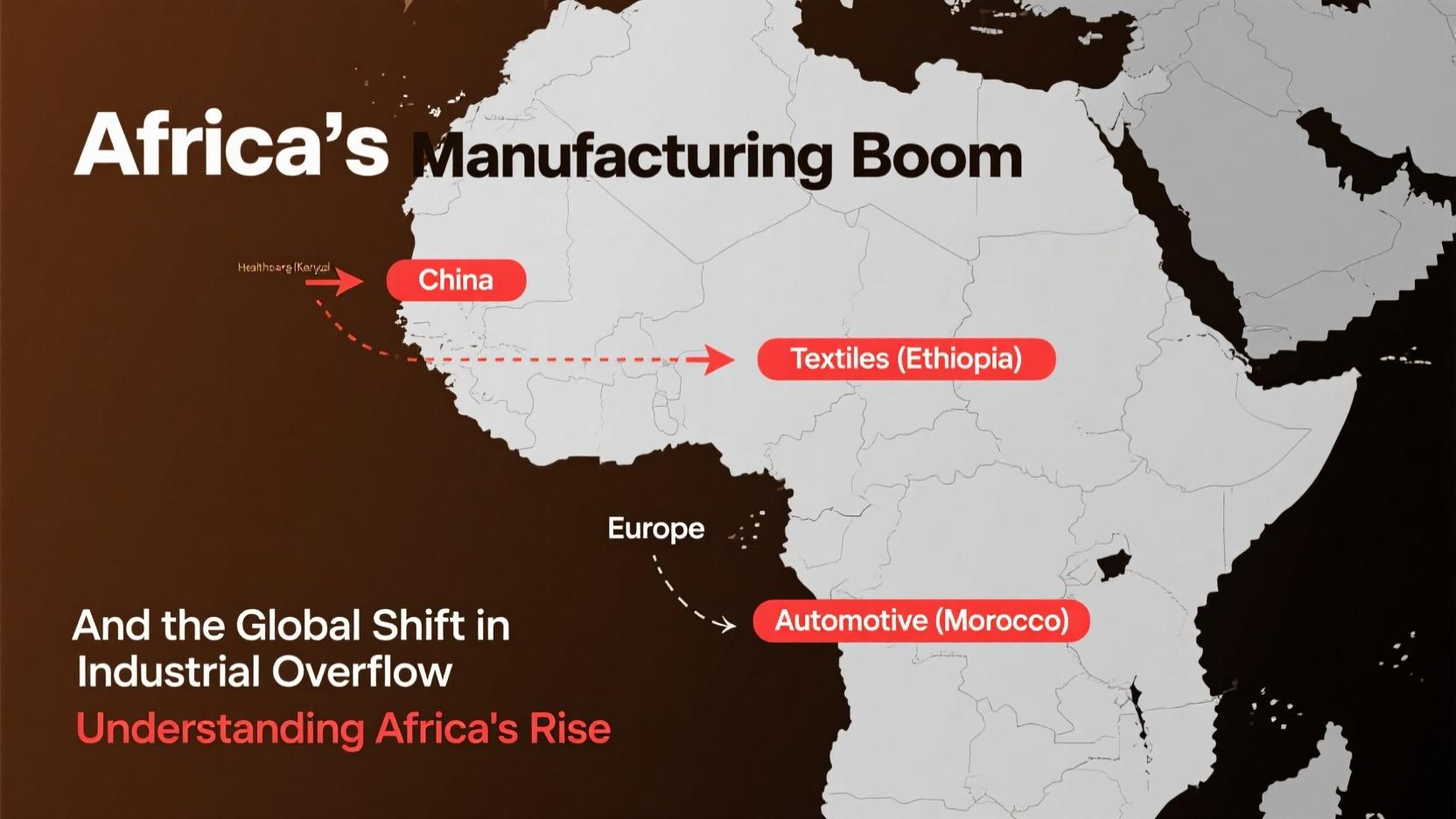From Overflow to Opportunity — Why Africa May Be the Next Industrial Frontier
As production costs rise in Asia and global firms seek diversified, resilient supply chains, Africa is emerging as a surprising winner. No longer just a raw material exporter, several African nations are now building industrial capacity, attracting global investment in textiles, electronics, pharmaceuticals, and auto components.
The continent’s manufacturing boom isn’t driven by internal consumption alone—it’s increasingly a strategic response to global industrial overflow.

Why the Shift to Africa?
Several converging factors are making Africa attractive:
Rising labor costs in Southeast Asia
Trade incentives under the African Continental Free Trade Area (AfCFTA)
Demographic dividend: Africa will have the world’s largest workforce by 2040
Infrastructure investments from China, the EU, and regional banks
A push to shorten Europe’s supply chains amid geopolitical uncertainty
Key Growth Hubs
Ethiopia – Textiles and garments (especially for European markets)
Kenya – Medical supplies and assembly operations
Nigeria – Cement, basic chemicals, and food processing
Morocco – Auto parts and aerospace components (linked to France and Spain)
Rwanda & Ghana – Tech assembly and digital service hubs
Case Study: Morocco’s Auto Revolution
Morocco now exports over $10 billion worth of cars and auto components annually, primarily to Europe. Firms like Renault and Stellantis have built eco-industrial parks in Tangier, supported by:
Efficient port logistics (Tanger Med)
Skilled vocational training programs
Renewable energy to power factories

Challenges Remain
Infrastructure gaps in central and western regions
Inter-country customs inefficiencies despite AfCFTA
Energy reliability in inland areas
Political instability in some markets
Yet, with targeted investment and supply chain digitization, these gaps are narrowing.
Key Takeaway
Africa is no longer on the periphery of industrial globalization. It is becoming a strategic extension of global value chains, turning overflow into opportunity — and positioning itself as a crucial player in the next decade of manufacturing realignment.
